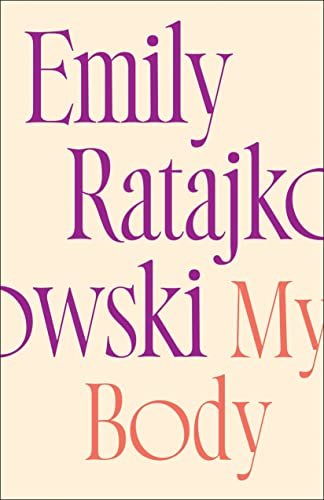“My Body”
A review of Emily Ratajkowski’s bestselling literary debut
By Kylie Hynes, Contributing Writer
Emily Ratajkowski. If you keep up on social media or regularly consume any variety of fashion or celebrity gossip magazines, you probably know her name. But even if her name doesn’t sound familiar to you, I’d be willing to bet that her image likely would be. The big brown eyes, full pouty lips and sculpted features framed by long chestnut hair are often noted second to the petite, toned hourglass figure that’s made her famous.
Ratajkowski is not unused to the attention her body commands nor the power it holds, and yet she often stops to reflect on the unique set of opportunities her body has afforded her in Hollywood. Compiling a series of diary-like essays she wrote over her decades-long career as a model, along with personal documentation of her more recent life events, Ratajkowski produced her first memoir in which she ponders the politics behind the way female bodies are perceived in the world and where the blurry line between empowerment and objectification lies.
Emily declared to the New York Times that her book is about capitalism (Young, 2021) and I couldn’t agree more. “My Body” is all about the flow of sex and power in an economy driven by our lust for more: more money, more fame, more followers and more love, all of which require you to sell yourself in one way or another. For Emily, sharing her body was the price of fame, but while her body used to make her a pawn in the shrewd power plays between the industry’s elite, it’s now made her a power player.
Ratajkowski begins her story where it all started. In middle-class San Diego suburbia, she was given a stable middle-class upbringing in a loving home with her parents who worked as a painter and a professor. She lived in an ordinary home, went to an ordinary school and had ordinary childhood experiences—even if most people would likely consider her anything but ordinary now.
Since birth, her beauty set her apart. Whether it was at home, in school or on the street, Ratajkowski’s face and body have always drawn attention. It didn’t matter whether they were men or women, relatives or strangers—everyone recognized her beauty. Leading the chorus of people singing praise to her beauty was her mother, who made it a point to always remind her daughter of her beauty and point it out to her when others complimented her or lustfully gazed at her on the street. Though part of me was annoyed by the way her mother implicitly promoted her daughter’s objectification and lust for attention, I couldn’t deny that she was successful in giving Ratajkowski a deep sense of what so many struggle to achieve: confidence.
With captivating narration, Ratajkowski walks readers through her formative years. As I read, she led me through the adolescent-filled halls of her high school, beneath the bleachers where she and her friends got high while skipping class, onto the beer-soaked floors of high school house parties, and into the shadowy, trauma-filled bedrooms of her past lovers. I felt like I was walking into auditions, castings, photoshoots, music videos, movie sets, and glamorous industry parties right alongside her, facing the scrutinizing and lustful gazes of aloof photographers and misogynistic industry tycoons at her side.
Despite the sexual trauma she faced over the years at the hands of the hungry-eyed professionals, of whom she worked so hard to gain respect, Ratajkowski’s resilience astonished me. Though her confidence wavered at times—though her mind waged war against the anxiety (or as she called it, the “woozies”) that made her question her worth and eating habits threatening to break her, she never backed down.
Ratajkowski strips the sparkling picture people have in their minds about what it’s like to be a model bare, exposing every dark and dirty part of the job. She walks us through her mind as she grapples with comparison, self-worth, purpose, validation, and life in the public eye as a “sex symbol.” Despite her constant craving for the validation of the power-hungry men she worked for, I couldn’t help but admire the underlying confidence she maintained through it all.
Ratajkowski’s confidence in herself and in her sexuality, fierce independence, keen intellect, impressive work ethic and strong drive gave me a deep respect for her and what she does. Few have been able to take their eyes off her enviable curves and pouty lips long enough to see the intellect and ambition beyond her “bedroom eyes” and though her line of work requires her to surrender her power and voice daily, she’s always looking for ways to flip the tables in her favor.
No longer afraid to share her story or embrace the power her body affords her, Emily can now count herself, not only amongst the list of New York Times Bestselling Authors but also as a wildly successful entrepreneur. Having ample experience modeling lingerie and swimwear in the past, Ratajkowski launched her own clothing company, Inamorata, with her childhood best friend from San Diego in 2017 (Fashion Network, 2019). Using her own money and body, she markets and models for her company almost exclusively through Instagram, so well that it sold out within 24 hours of launching its first capsule collection of bikinis. Her success selling swimwear, lingerie, apparel and accessories earned her a place on the 2020 Forbes infamous “30 Under 30 list” (Sternlicht, 2020). Already a supermodel, activist, actress, author and entrepreneur, I can’t imagine what Ratajkowski will wow us with next but I’m already here for it.
Sources:
Editors of Fashion Network. (2019, February 7). Emily Ratajkowski Unveils “Inamorata Body.” Fashion Network.
Sternlicht, A. (2020, February 2). How Mega-Influencer Emily Ratajkowski Turns Obsessive Fans into a Booming Business. Forbes.
Young, M. (2021, November 5). In a World That Exploits Women, Emily Ratajkowski Exploits Herself. Is That Progress? The New York Times.

